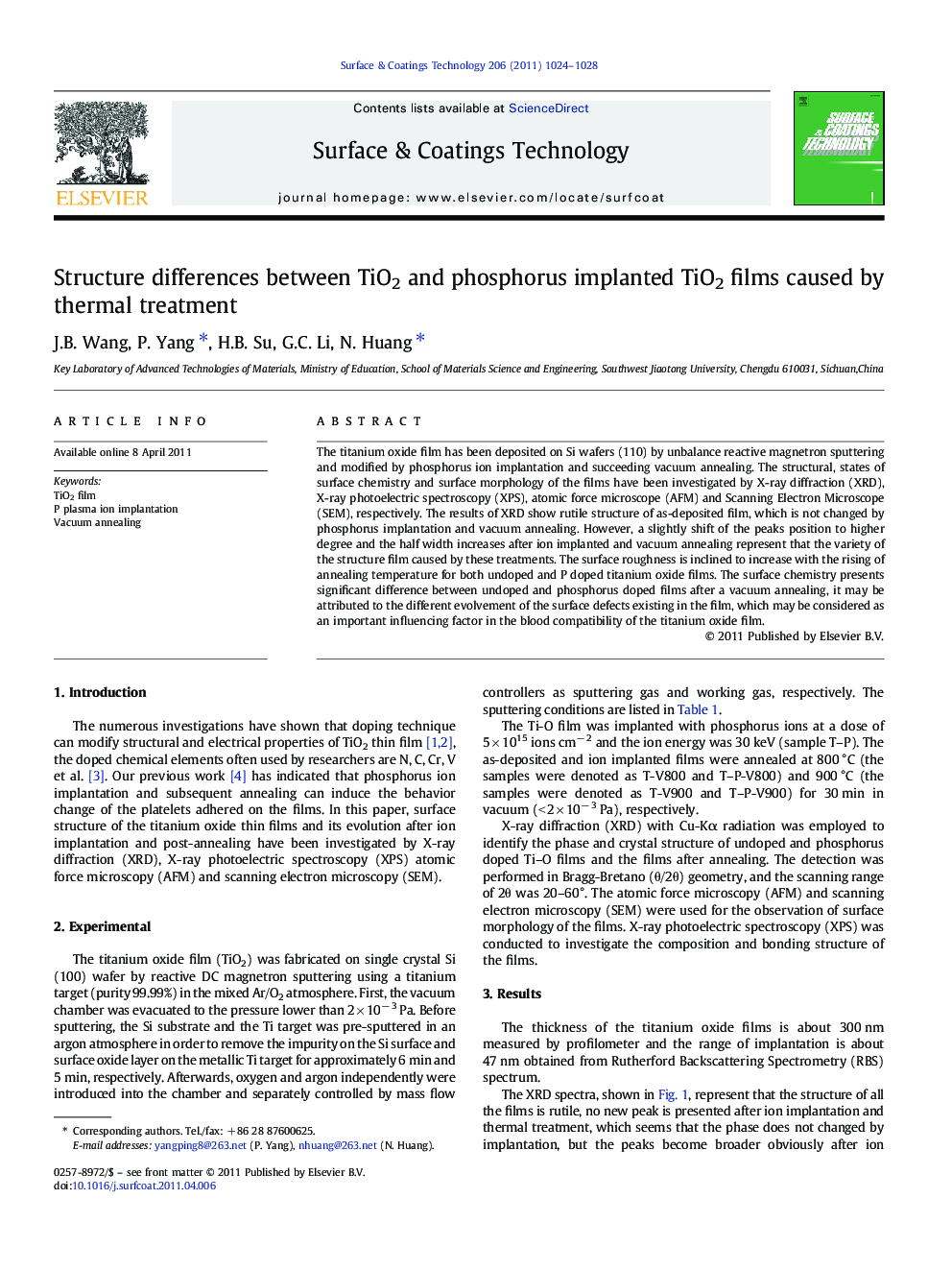| Article ID | Journal | Published Year | Pages | File Type |
|---|---|---|---|---|
| 1658906 | Surface and Coatings Technology | 2011 | 5 Pages |
The titanium oxide film has been deposited on Si wafers (110) by unbalance reactive magnetron sputtering and modified by phosphorus ion implantation and succeeding vacuum annealing. The structural, states of surface chemistry and surface morphology of the films have been investigated by X-ray diffraction (XRD), X-ray photoelectric spectroscopy (XPS), atomic force microscope (AFM) and Scanning Electron Microscope (SEM), respectively. The results of XRD show rutile structure of as-deposited film, which is not changed by phosphorus implantation and vacuum annealing. However, a slightly shift of the peaks position to higher degree and the half width increases after ion implanted and vacuum annealing represent that the variety of the structure film caused by these treatments. The surface roughness is inclined to increase with the rising of annealing temperature for both undoped and P doped titanium oxide films. The surface chemistry presents significant difference between undoped and phosphorus doped films after a vacuum annealing, it may be attributed to the different evolvement of the surface defects existing in the film, which may be considered as an important influencing factor in the blood compatibility of the titanium oxide film.
